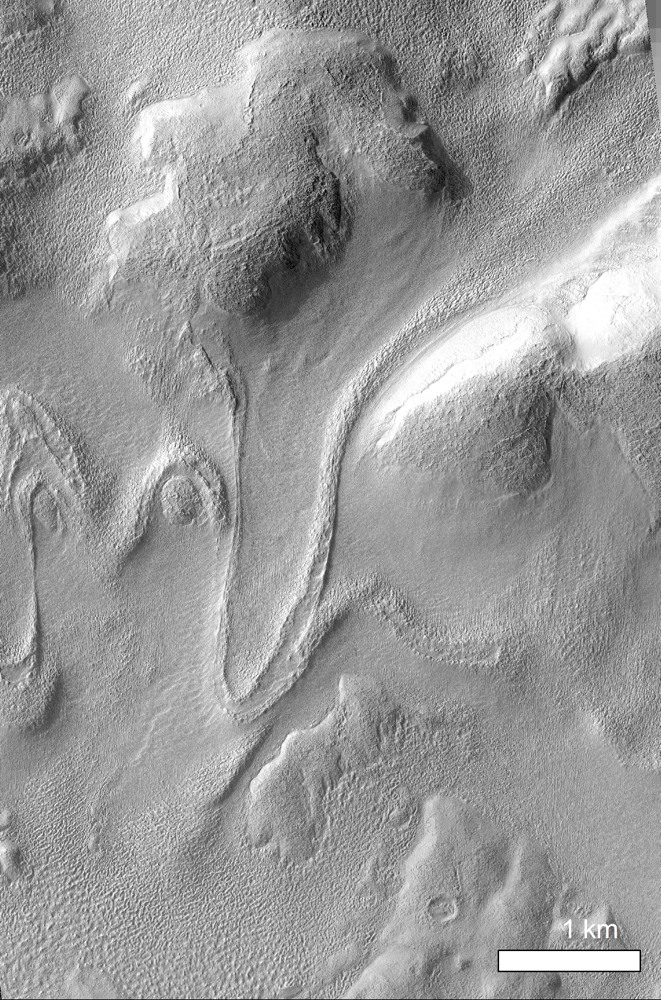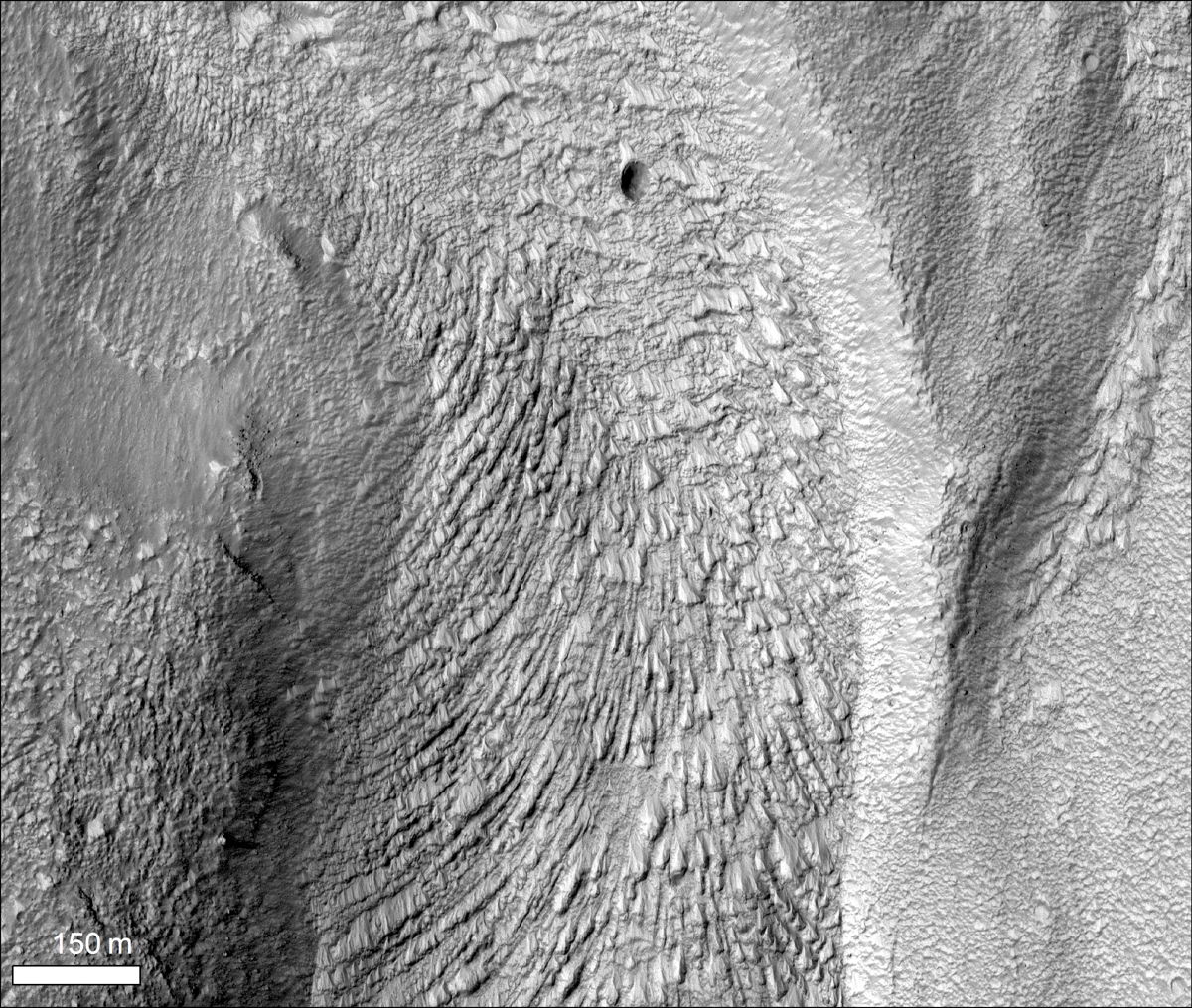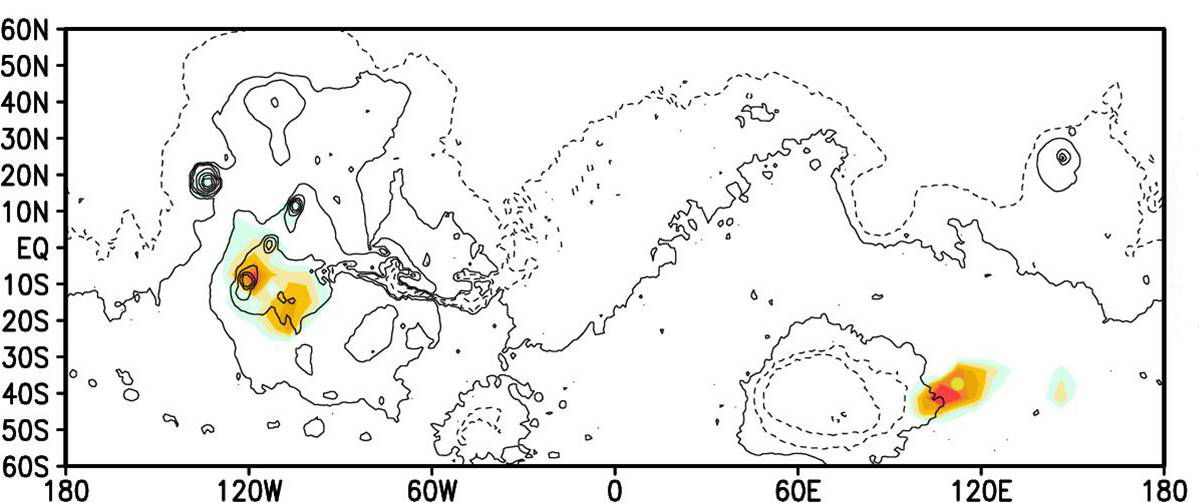Earth Climate Change Models Work for Mars, Too

Climate change models used to analyze changing conditions on Earth can be applied to at least one other planet in our solar system — Mars, a new study reveals.
Earth-based computer models can predict the age and location of glacial features on the Red Planet, scientists say. This extra-planetary generalization suggests that climate change models aren't so as inaccurate as they're sometimes portrayed, said study researcher William Hartmann, a senior scientist at the Planetary Science Institute in Tucson.
"Some public figures imply that modeling of global climate is 'junk science,' but if climate models can explain features observed on other planets, then the models must have at least some validity," Hartmann said in a statement.
Hartmann and his colleagues presented the new Mars climate research today (Oct. 16) at the annual meeting of the American Astronomical Society's Division for Planetary Sciences in Reno, Nev.
Today's Martian landscape is not known for its glaciers, but previous research has shown that during some periods of Mars' history, the planet's rotational axis has tilted more than 45 degrees. When this happens, climate models suggest that the polar ice cap tilted toward the sun evaporates, lingering in the atmosphere as water vapor and increasing the chances of snowfall in the hemisphere tilted away from the sun.
This last happened on Mars 5 million to 20 million years ago. (Nowadays, it still snows on Mars, but the microscopic snowflakes are made of carbon dioxide, not water.)
Planetary researchers have since used global climate models built for Earth but tweaked for Martian conditions to study Mars' glacial history. They've found indications of glacial features in a 40-mile-wide (64 kilometers) crater called "Greg" in the mid-latitude southern region of the planet. The surface layer of those features would have formed at the same time as the last extreme tilt, PSI scientists found. [Photos of Mars: The Amazing Red Planet]
Breaking space news, the latest updates on rocket launches, skywatching events and more!
Now, the researchers have combined four different measurements of Martian geology and climate, including climate predictions, the presence of glaciers, the ages of glacial surface layers and radar measurements of ice. The measurements and models are all consistent with one another, the researchers found.
"The bottom line is that the global climate models indicate that the last few intense deposits of ice occurred about 5 million to 15 million years ago, virtually centered on Greg crater, and that's just where the spacecraft data reveal glaciers whose surface layers date from that time," Hartmann said. "If global climate models indicate specific concentration of ice-rich features where and when we actually see them on a distant planet, then climate modeling should not be sarcastically dismissed. Our results provide an important, teachable refutation of the attacks on climate science on our home planet."
Follow Stephanie Pappas on Twitter @sipappas or LiveScience @livescience. We're also on Facebook & Google+.

Stephanie Pappas is a contributing writer for Space.com sister site Live Science, covering topics ranging from geoscience to archaeology to the human brain and behavior. She was previously a senior writer for Live Science but is now a freelancer based in Denver, Colorado, and regularly contributes to Scientific American and The Monitor, the monthly magazine of the American Psychological Association. Stephanie received a bachelor's degree in psychology from the University of South Carolina and a graduate certificate in science communication from the University of California, Santa Cruz.



